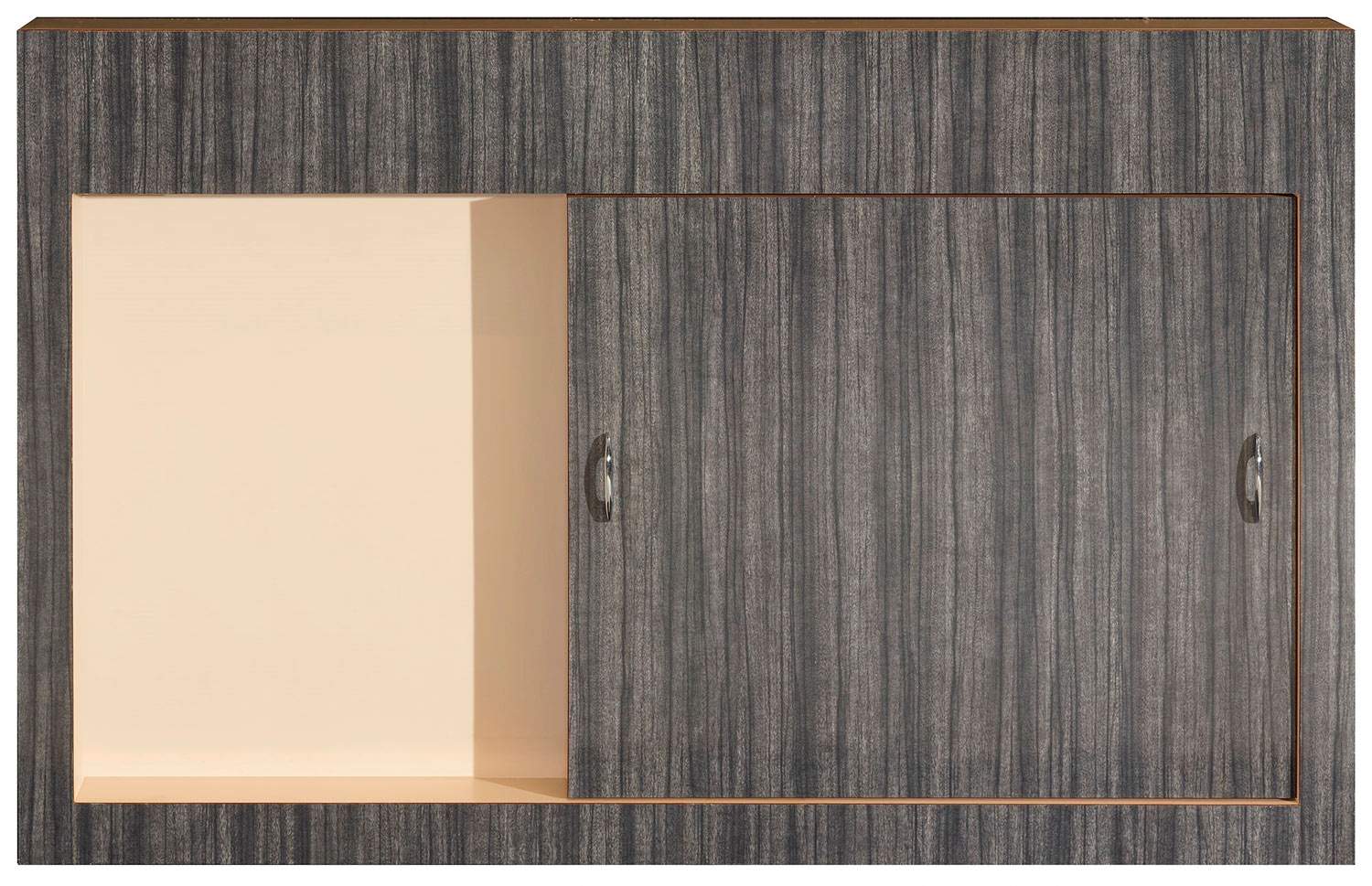Rome, exhibition on Richard Artschwager, protagonist of the 20th century, opens at Gagosian
From Jan. 14 to March 11, 2021, Gagosian ’s Rome office will present an exhibition devoted to one of the leading figures in twentieth-century art, Richard Artschwager (Washington, 1923 - Albany, 2013): in particular, works from a key period of his career, from 1964 to 1987, are shown.
Artschwager’s work, associated with many genres but conforming to none of them, has been variously described as "Pop," because it incorporates everyday objects and commercial materials, but also as minimal, because of its crisp forms and solid-geometric presence, and finally as conceptual, because of its intellectual engagement with meaning. Gagosian thus offers a rare survey of the first decades of Artschwager’s rich career, testifying to his ability to reorganize perceptual structures by directly confronting the illusory and figurative world of images with the concretely human world of objects.
Through variations in scale and transpositions of forms and materials, Artschwager’s works urge an ongoing reevaluation of space and time, suggesting articulated narratives, compositional complexities at once ordinary and surreal. His art makes use of synthetic, commercial and industrial materials, sources that Artschwager has managed to transform with that unflappable visual wit that makes the familiar “unusual.” In 1962 the artist began using formica, a radically unconventional and “low” quality material known at the time for being used in the making of smooth bench surfaces. Its shiny, marbled finish is recognizable in everyday objects and at the same time bears an abstract resemblance to expressionist painting. The early 1960s also marked the beginning of Artschwager’s experimental use of cellotex: a very rough material composed of compressed sugarcane fibers, which he used as a base for his unique grisaille paintings, in which the originality of the industrial material is blended with hand-drawn lines. These compositions were often based on both arcane and ordinary subjects; Interior (1964), for example, is a perspective, semi-abstract, diagrammatic image of the interior of a room, which narrows as depth perception progresses.
Artschwager’s sculptural works demonstrate how the artist integrated craft skills into intellectual and formal experimentation with perception and composition. In Sliding Door (1964), the door of a cabinet casts a shadow within the pale interior of the work generating an ever-changing pattern that shifts along with the light and the viewer’s movements around the object. Untitled (1965), made of formica and wood, similarly employs the curvature of a circle; although not functional, it mimics the utilitarian aesthetic of a loudspeaker or household appliance, demonstrating Artschwager’s ability to meet our expectations of an object or painting only to subvert them.
Artschwager’s work has been exhibited in the most distinguished contexts: the Centre Pompidou in Paris, the Tate in London, MoMA and the Whitney Museum of American Art in New York, the Art Institute of Chicago, the Kunstmuseum Wolfsburg in Germani, Museum Ludwig in Cologne, and the Staatsgalerie in Stuttgart. Exhibitions include Painting Then and Now at the Museum of Contemporary Art in North Miami (2003); Up and Down/Back and Forth at the Deutsche Guggenheim in Berlin (2003); Hair at the Contemporary Art Museum in Saint Louis (2010); Richard Artschwager! at the Whitney Museum of American Art in New York (2012, traveled to the Hammer Museum in Los Angeles, Haus der Kunst in Munich, and Nouveau Musée National de Monaco), and Punctuating Space: The Prints and Multiples of Richard Artschwager at the Frances Lehman Loeb Art Center at Vassar College in Poughkeepsie, New York (2015). A major retrospective of Artschwager’s work, the first Italian anthological exhibition of the U.S. artist, curated by Germano Celant, was held at Mart - Museo di Arte Moderna e Contemporanea di Trento e Rovereto in October 2019 moving to the Guggenheim Museum in Bilbao in February 2020.
A bilingual illustrated catalog, in Italian and English, with an essay by curator Dieter Schwarz is being published on the occasion of the Gagosian exhibition. For information you can visit the Gagosian website.
 |
| Rome, exhibition on Richard Artschwager, protagonist of the 20th century, opens at Gagosian |
Warning: the translation into English of the original Italian article was created using automatic tools. We undertake to review all articles, but we do not guarantee the total absence of inaccuracies in the translation due to the program. You can find the original by clicking on the ITA button. If you find any mistake,please contact us.





























